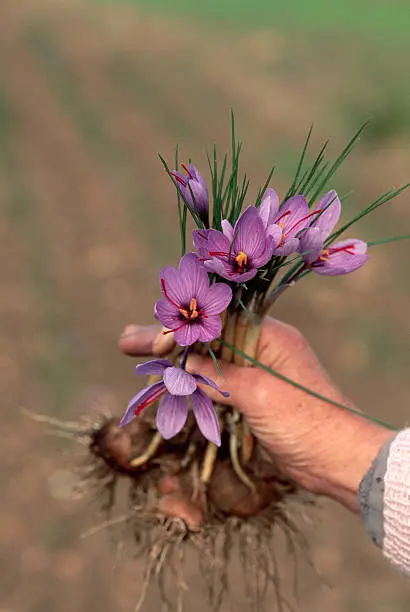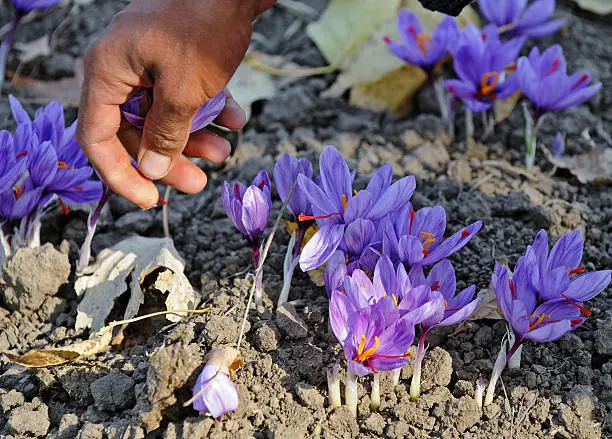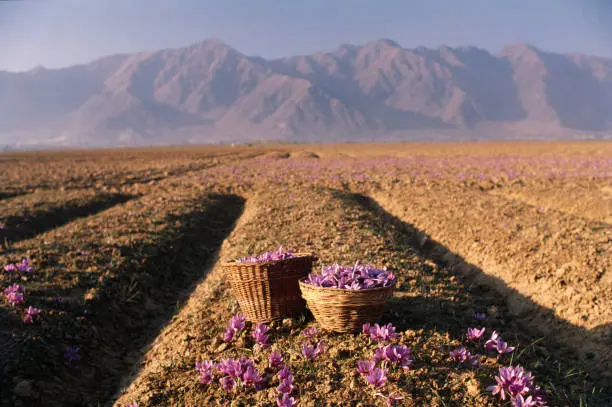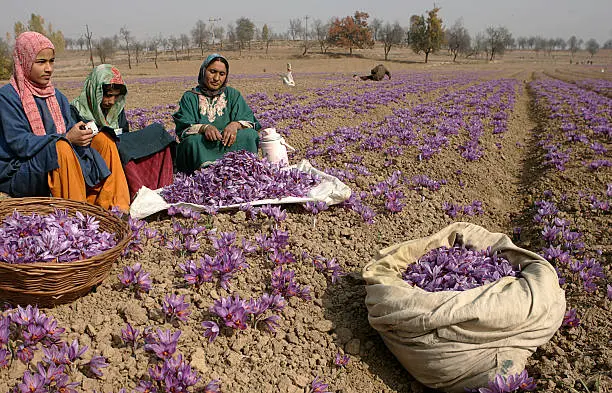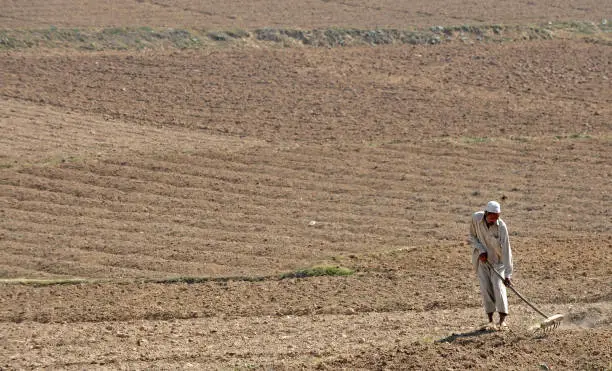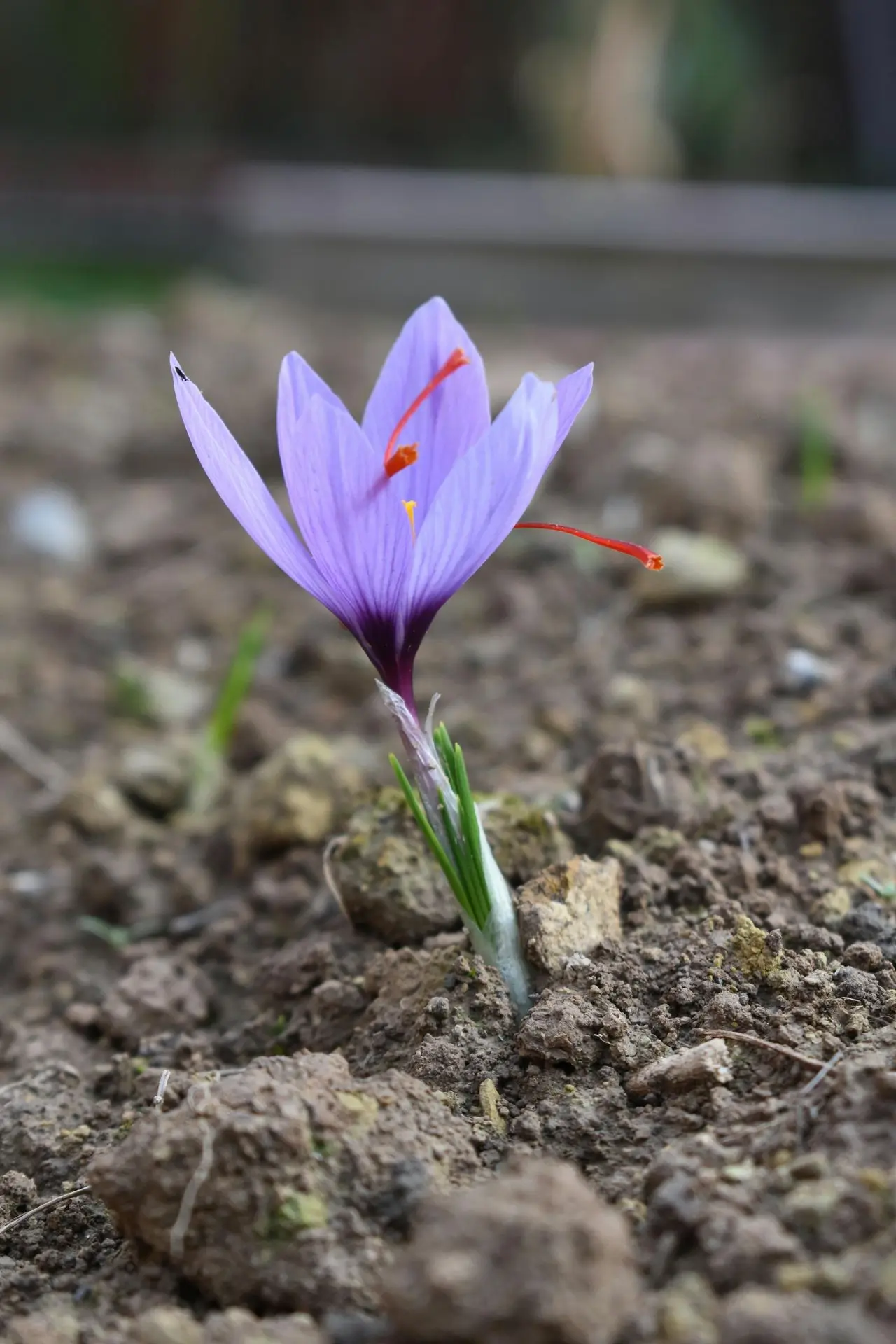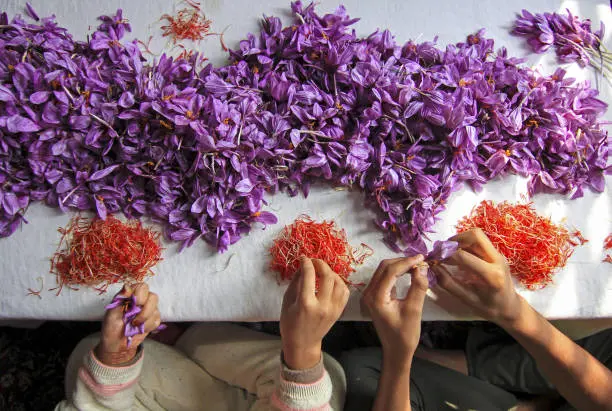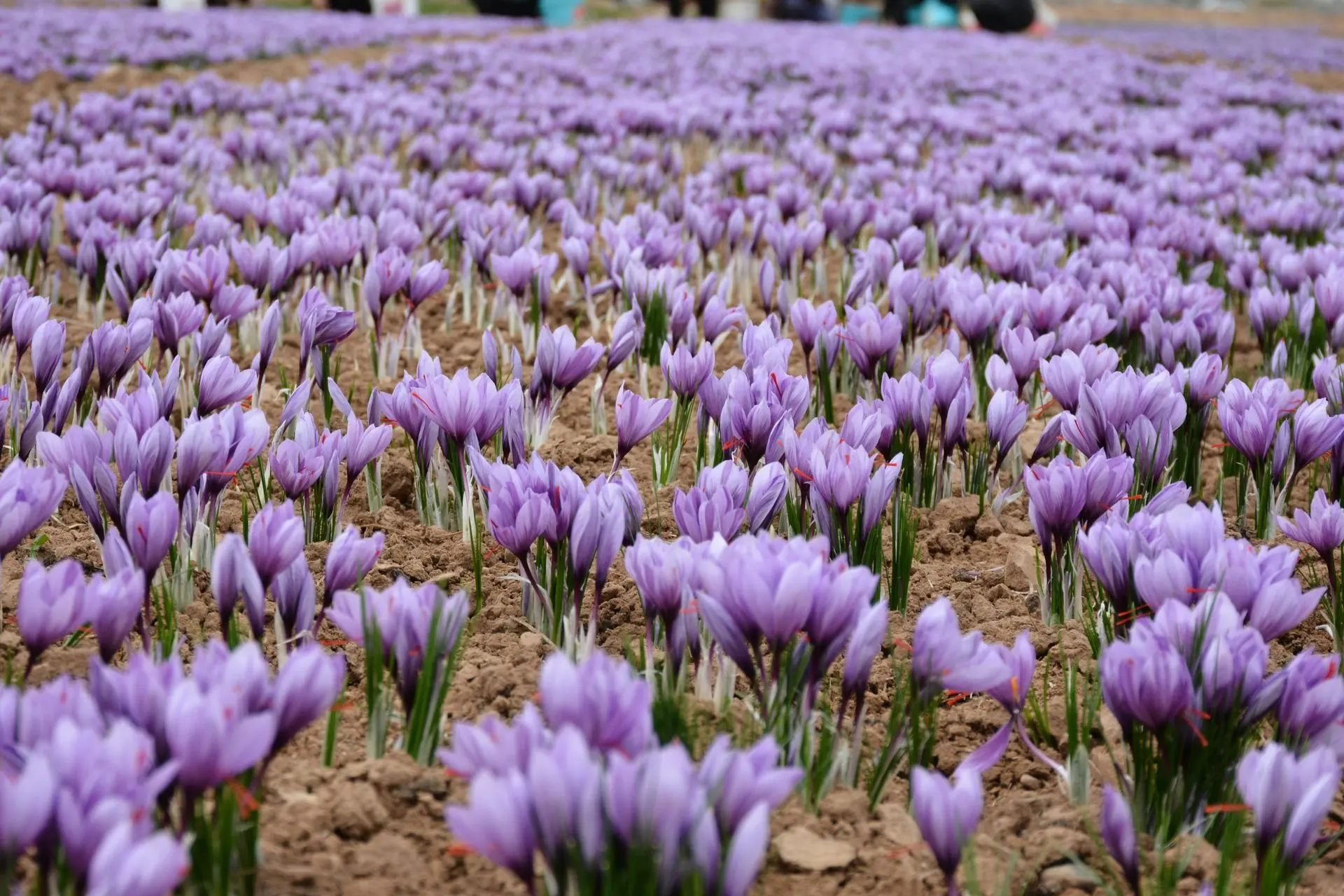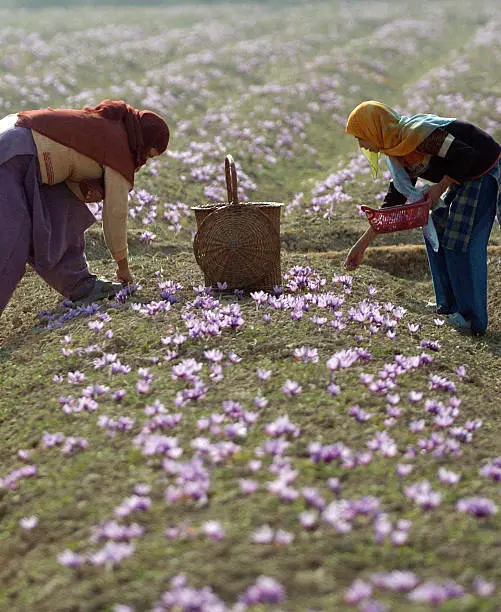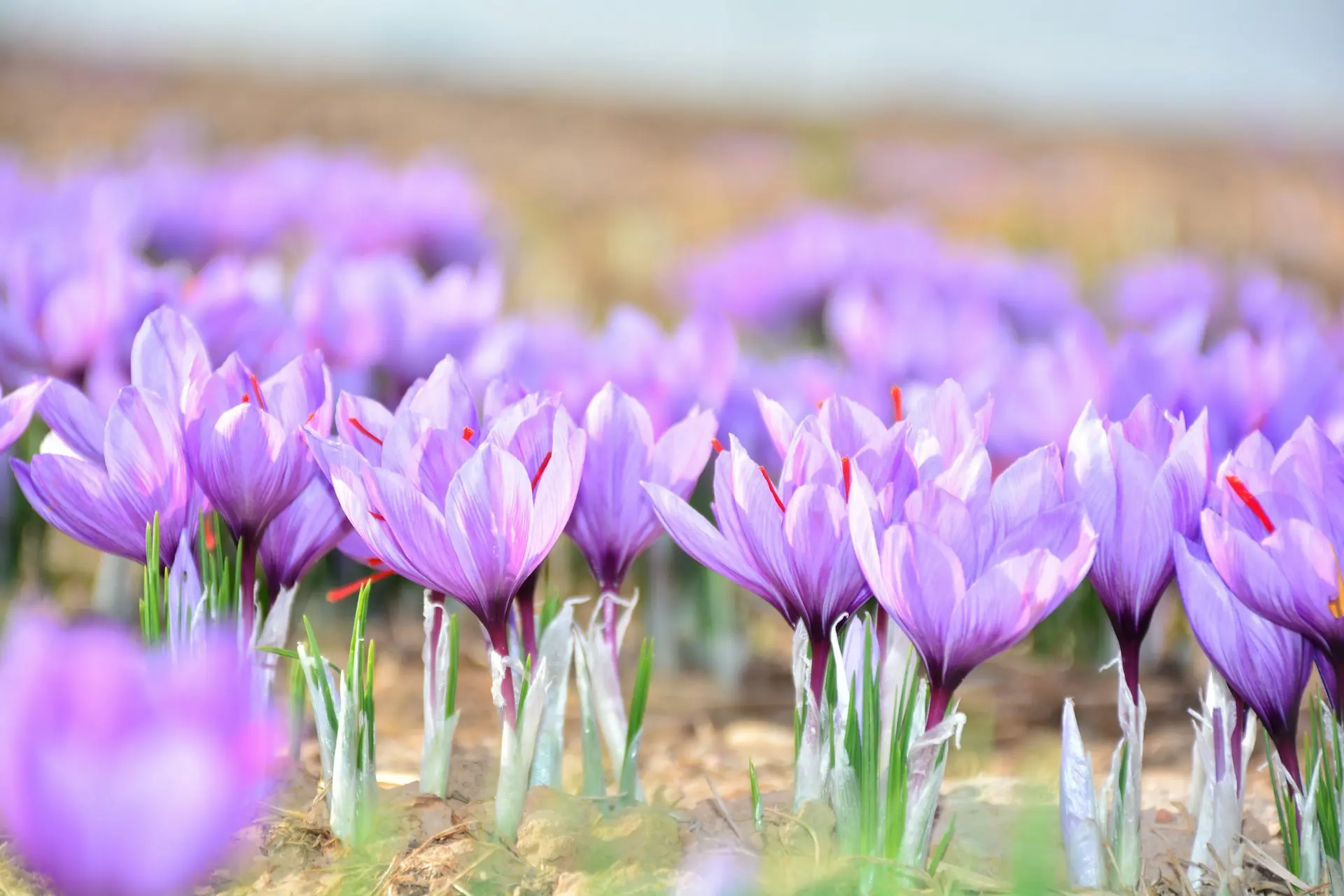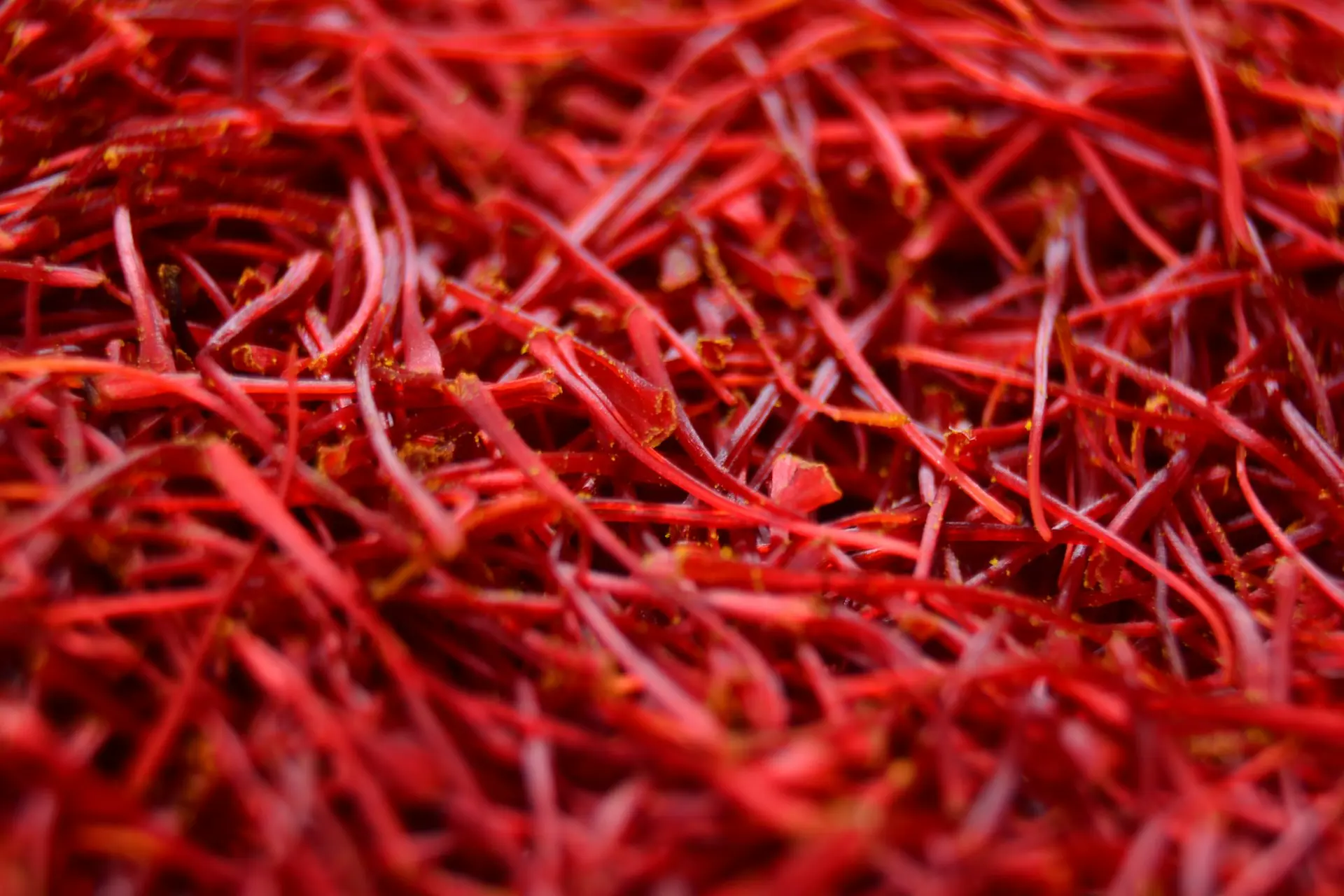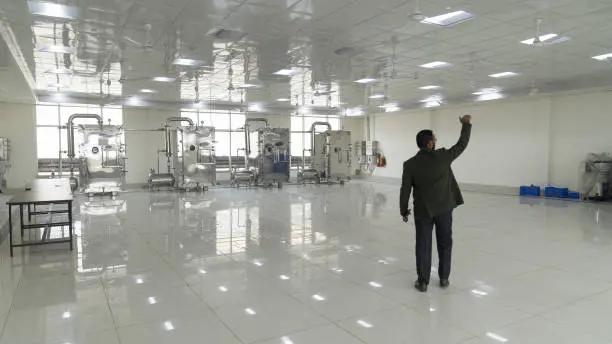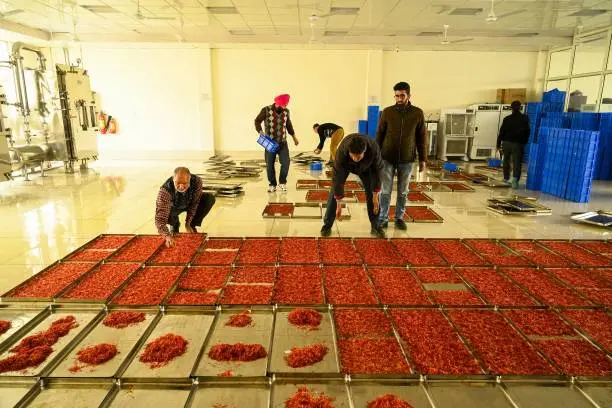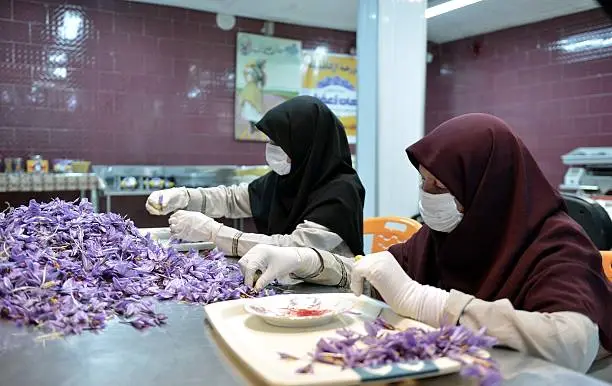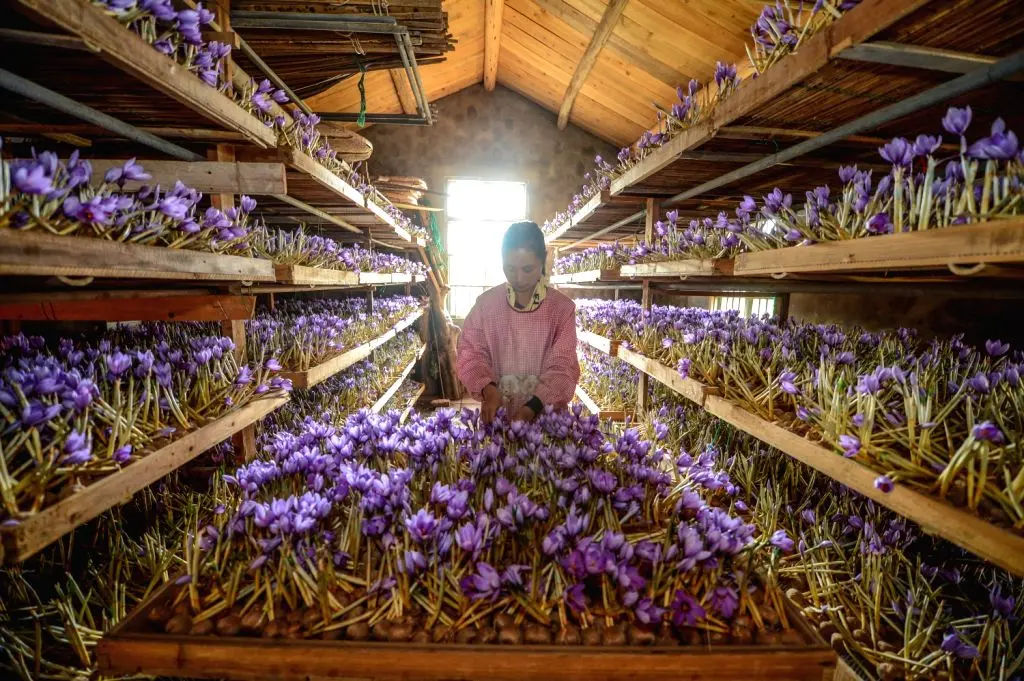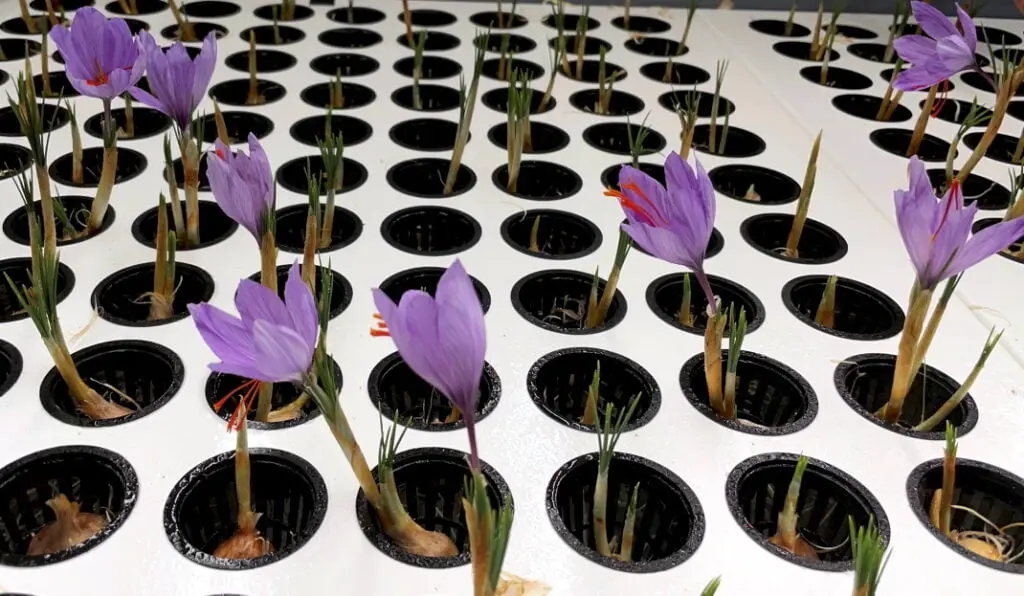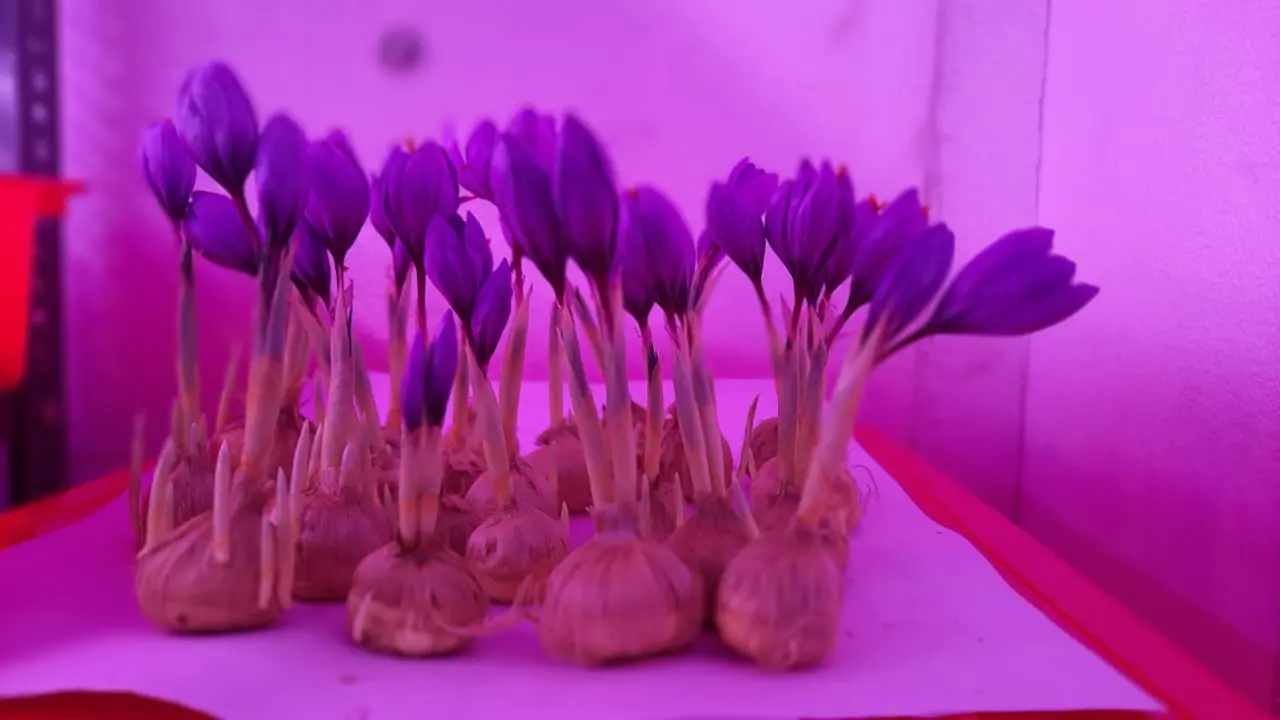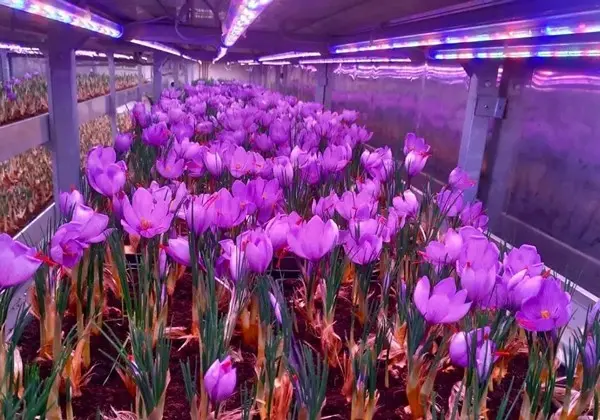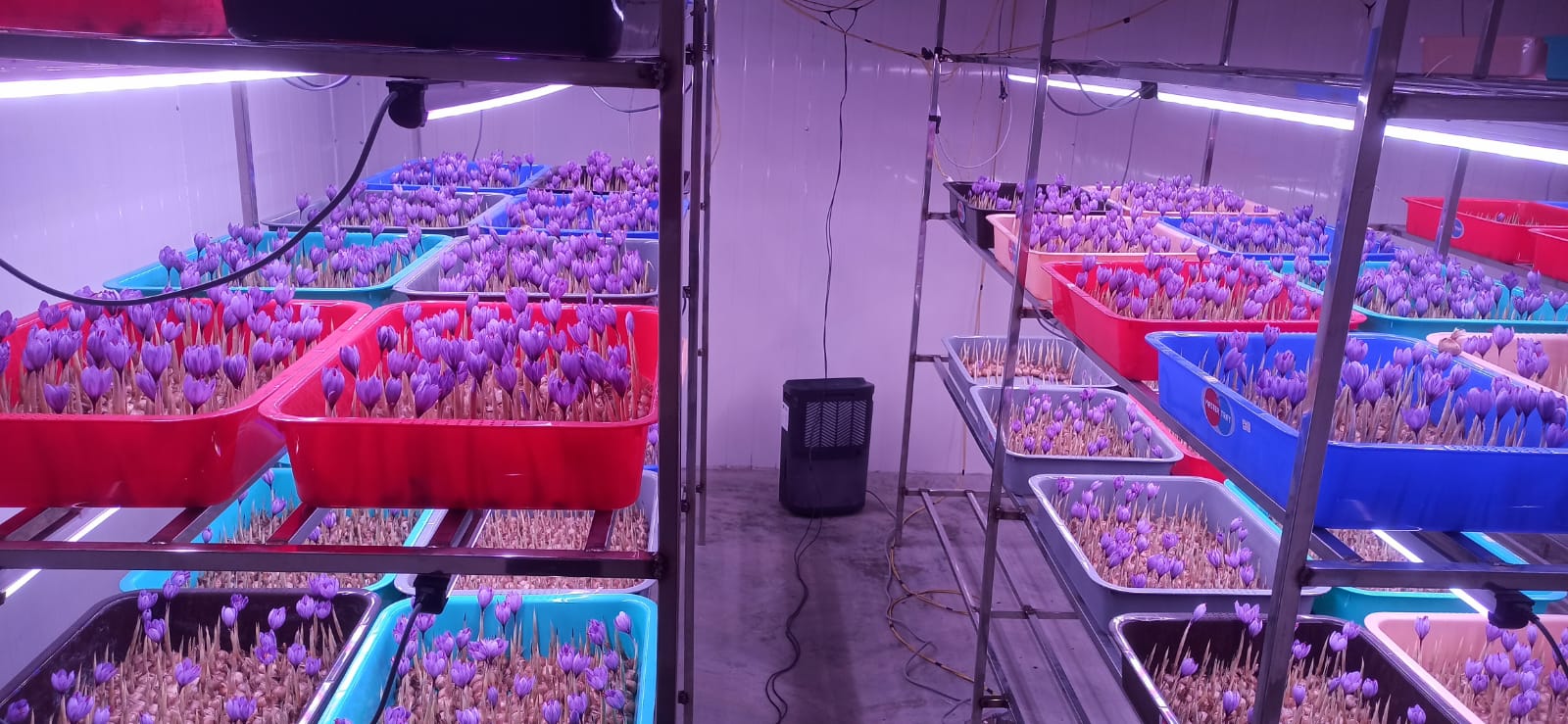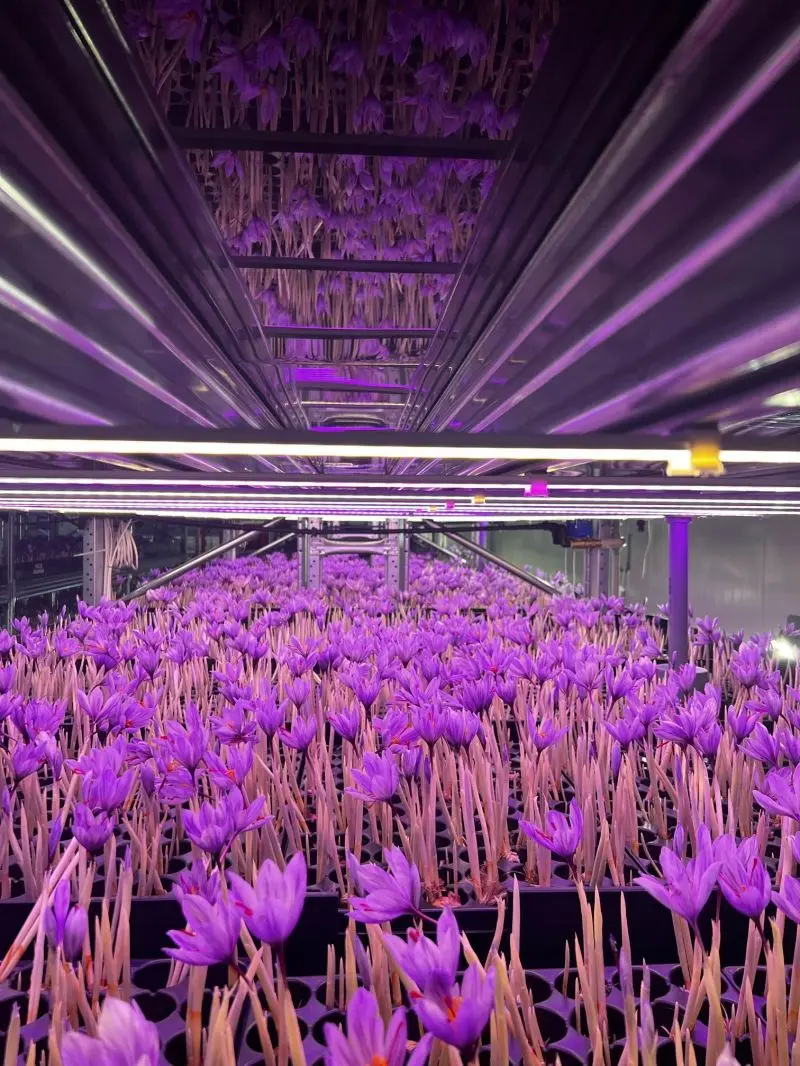"SOLUTIONS by RedGold INDIA PVT.LTD"
"If we do not evolve with time, we risk letting our traditions wither and our industries fade into obscurity. The world moves forward with technology and innovation, and if we stand still, the very foundation of our heritage will perish." Red Gold is dedicated to ensuring that the legacy of Kashmiri saffron not only survives but thrives for generations to come.
Red Gold India Pvt.Ltd: Revolutionizing Saffron Cultivation to Tackle Industry Challenges
At Red Gold India Pvt. Ltd., we are committed to solving the critical issues facing the saffron industry today. By leveraging cutting-edge technologies, we aim to address the challenges of declining saffron yields, land limitations, and the lack of technological advancement in traditional farming. Our innovative approach will not only increase saffron production but also provide sustainable solutions that create a bright future for the saffron industry.
1.Revolutionizing Saffron Cultivation with Innovation
Red Gold India Pvt. Ltd., a Kashmir-based startup, blends technology with tradition to revolutionize saffron farming. **High-tech saffron labs ensure premium-quality harvests by providing controlled environments for optimal flowering, producing **5–7.5 kilograms** per lab annually. These labs are complemented by **advanced nurseries**, multiplying saffron corms for sustainable expansion.
To preserve heritage, we integrate this with **soil-based farming**, using modern equipment and precision irrigation on leased lands. This approach boosts production while creating jobs for skilled youth. By combining innovation and tradition, Red Gold safeguards Kashmiri saffron’s legacy, ensuring purity and sustainability for future generations.
# Experimenting with Two Crops per Year in Labs: Unlocking the Potential of Increased Yield
- One of the most pressing challenges facing the saffron industry is the short growing season and limited crop cycles, leading to low yields. At Red Gold, we are determined to solve this problem through aeroponic saffron cultivation. By conducting experiments to grow two crops per year in our high-tech labs, we aim to break the seasonal barriers that restrict saffron cultivation. The controlled environment in our labs allows us to manage temperature, humidity, and light, enabling us to replicate optimal growing conditions throughout the year.
- This process will make two crop cycles per year a reality, allowing us to double the saffron production from the same space, using advanced aeroponics systems. This innovation tackles the issue of low yields and limited harvests that have plagued saffron farming for generations.
2. Reducing Dependency on Large Land Areas: Maximizing Output from Limited Space
- The lack of available land for large-scale saffron farming is another critical issue we aim to address. Through our aeroponic labs, we can produce 5 to 7.5 kg of saffron per lab per year, using a fraction of the land required for traditional cultivation. By adopting vertical farming methods and utilizing high-tech systems, Red Gold is leading the way in maximizing land efficiency, making saffron cultivation viable even on smaller plots.
- This solution directly addresses the issue of land scarcity, allowing saffron to be produced more intensively with higher yields per square foot. The success of these lab-based experiments will significantly boost overall saffron production, reducing the pressure on traditional agricultural land and enabling us to meet global demand.
3. Empowering Youth with Technological Training and Job Opportunities
- The decline in interest among the younger generation in saffron farming is a serious concern. Red Gold is committed to reversing this trend by providing modern agricultural training and creating technological jobs. Our high-tech labs and automated farming processes will require skilled workers, offering job opportunities for Kashmiri youth in areas such as saffron lab operations, drone surveillance, and automated harvesting systems.
- We will also be offering training programs to equip the younger generation with the skills needed for technologically advanced farming, fostering a new wave of interest in saffron cultivation and offering long-term career opportunities in the growing agritech sector.
4. Leasing Land for Sustainable Outdoor Cultivation
- One of the major obstacles facing saffron farming is the lack of available land for cultivation. Through our lease agreement program, Red Gold will collaborate with local farmers to lease underutilized land and transform it into high-production saffron fields. This program will not only maximize the potential of available land but also provide revenue-sharing opportunities for local farmers, creating a win-win scenario for all involved.
- By integrating modern farming equipment like precision sowing machines and drip irrigation systems, we will optimize the land’s productivity, ensuring higher yields with reduced input costs. This approach will improve both the quality and quantity of saffron harvested from the land, while empowering local farmers with the resources and knowledge to enhance their productivity.
5. Integrating Advanced Agricultural Technologies for Maximum Efficiency
The lack of technological integration in saffron farming has been one of the key barriers to improving yields. Red Gold’s solution is to bring advanced agricultural equipment into the saffron cultivation process, including:
- Automated sowing machines that ensure precise planting of corms for uniform growth.
- Drip irrigation and micro-sprinklers that provide targeted, efficient water usage, preventing over-watering and reducing waste.
- Drones for pest surveillance and field monitoring, enabling quick intervention to prevent crop damage.
By embracing these modern agricultural technologies, Red Gold is setting new standards for saffron farming, ensuring higher efficiency, better resource management, and ultimately, higher quality saffron production.
6.Combating Saffron Adulteration: A Commitment to Purity through GI Tagging
One of the biggest threats to the saffron industry, particularly in Kashmir, is adulteration. Due to the high demand and premium price of saffron, unscrupulous traders mix saffron with lower-quality substances, such as dyed threads or other cheaper spices, to deceive consumers and profit from a premium product. This not only damages the reputation of Kashmiri saffron but also harms consumers who are unknowingly buying adulterated goods.
At Red Gold India Pvt. Ltd., we are committed to eliminating adulteration by trading exclusively in GI-tagged saffron. The Geographical Indication (GI) tag ensures that the saffron we produce and distribute is 100% pure and originates from the high-altitude regions of Kashmir. GI tagging is a mark of authenticity that guarantees consumers the highest quality saffron, protected from fraud and imitation.
By exclusively selling GI-tagged saffron, we aim to restore confidence in the saffron market, protect the integrity of Kashmiri saffron, and safeguard our farmers’ livelihoods. This initiative will not only stop the illegal mixing of saffron with other substances but also ensure that our saffron continues to enjoy its rightful place as one of the world’s most prestigious spices.
Through this effort, Red Gold is not only providing premium-quality, authentic saffron but also leading the fight against adulteration, ensuring that consumers worldwide can trust the purity and origin of every strand they purchase.
Red Gold is more than a business, we're a partner in progress, committed to the revitalization of Kashmir's saffron heritage.
